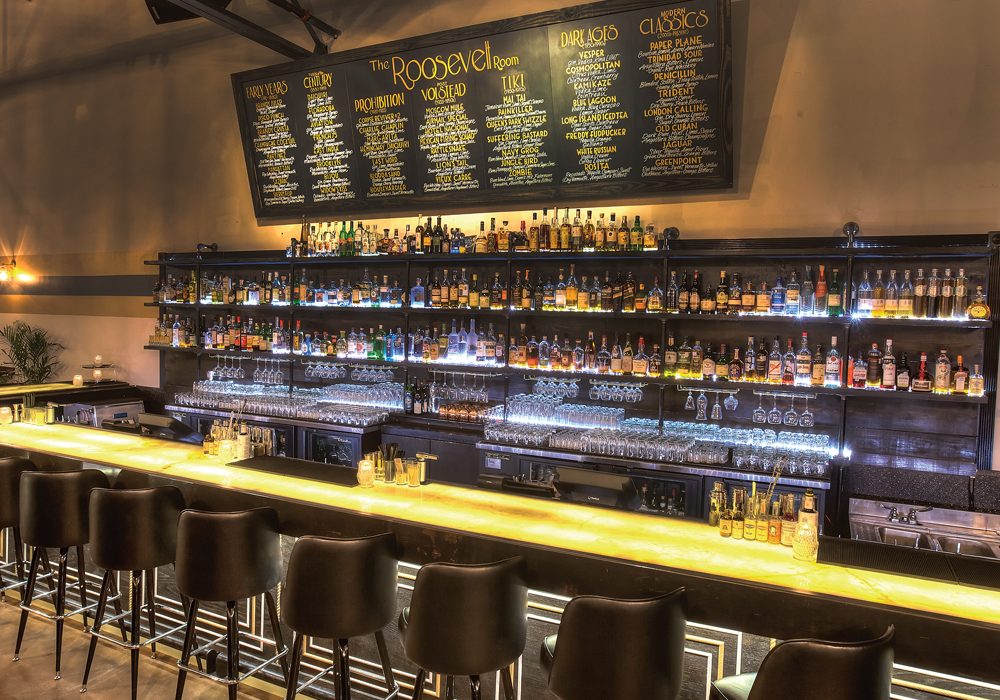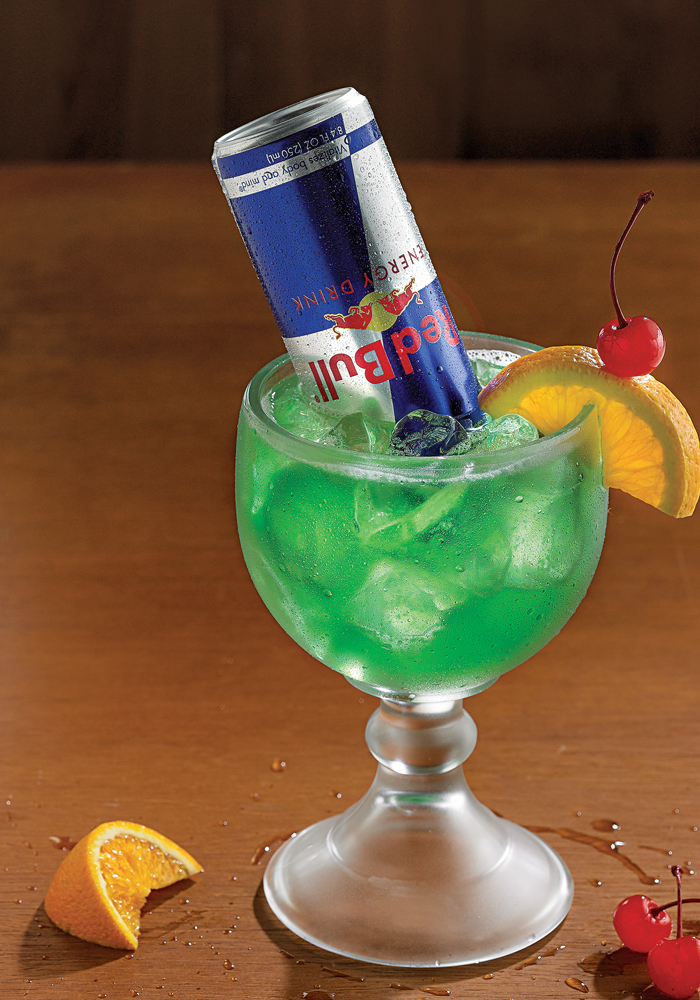Editor’s note: As so many alcohol trends begin on-premise, we occasionally cross-post pertinent content here from our on-premise sister publication, Cheers.
The time has come for rum, according to Alexandra Wright, partner and lead bartender of X, a Caribbean rum bar in Chicago that opened in May. “With a huge spectrum of versatility, rum is at the forefront of most cocktail programs, and it’s also being debuted as a complex sipper,” says the self-confessed rum nerd. “Rum is cool and so malleable.”
“Rum is a classic liquor that is seeing traction due to the current consumer being more willing to try different things,” says Buddy Naber, director of operations services for Dallas-based Boston’s Pizza Restaurant & Sports Bar. The casual-dining chain, which currently has 23 restaurants in the U.S. and 12 in Mexico, mandates a core of five rums; franchisees can add more to satisfy regional preferences.
Chainwide, the most popular call brands are Sailor Jerry spiced rum and Cruzan rum, both light and aged. “While rum hasn’t seen a popularity increase like the whiskey category, it has received a big boost from the Tiki craze,” Naber adds.
At The Roosevelt Room, a cocktail bar located in the Hotel Deco in Austin, TX, co-owner and bartender Dennis Gobis has been busy renovating. He wants to double the capacity of the backbar to some 650 bottles.
The selection includes 60 different rums as well as cachaça (made from fermented sugarcane juice) and arrack (a South Asian distilled spirit). “The hardest part was choosing from the huge selection of cool stuff available,” says Gobis.

Cool Stuff
Although rum is closely associated with the Caribbean, it can be, and is, made all over the world. Rum is usually fermented from molasses but sometimes from sugarcane. The spirit is distilled in column or pot stills—and often both.
Products range from white rum to black rum, aged rum and overproof rum and rhum agricole—as well as spiced and flavored variations. And regulations about age statements vary from country to country—if they exist at all. This allows producers plenty of stylistic leeway, and lots for rum aficionados to geek out over.
“Unlike whiskey or tequila, there aren’t a whole lot of rules about rum,” says Brian Heese, beverage program manager at the Monarch Prime & Bar, a steakhouse and cocktail bar in Omaha, NE. Monarch Prime stocks 20 different rums, as well as cachaça.
“Currently we are selling a ton of rhum agricole. It’s trendy right now,” says Heese. “Because rhum is made from fresh-pressed sugarcane, it evokes funky and vegetal notes.”
“The coolest spirit I’ve tasted in years is aguardiente de cana from Oaxaca,” says Gobis. Made from sugarcane, it is run through traditional clay mezcal stills. It’s rarely seen in the U.S.—yet. He stocks a brand called Paranubes.
“Oaxacan rum is really unusual,” agrees Heese. The expression he sampled had an aroma of cooked tomatoes.
Taking a Page from Whiskey
Borrowing inspiration from whiskey, a few producers offer rums with unique barrel finishes as well as single-barrel expressions. For example, Ron Abuelo Finish Collection is a 14-year-old rum matured for an extra year in different barrels: The expressions are oloroso sherry casks, tawny port casks and Napoleon Cognac casks. And the latest entry in Serralles’ Signature Series is Don Q double aged vermouth cask finish rum.
“The different barrel finishes add complexity,” says Gobis. He cites an expression from Rhum Clement aged in bourbon barrels and Cognac casks. “It’s a gateway to agricole rum for whiskey drinkers.”
Don Q also offers a Single-Barrel Signature Release, with the age of the batch indicated on the label. Plantation Rum has a whole series of single-cask expressions. And Goslings Rum is about to release a limited quantity of a single-barrel rum.
Price Is Right
Especially compared to whiskey, rum is generally a bargain, bartenders say.
“One of the beautiful things about rum is that you can get a 25-year-old rum for about the same price as a seven-year-old whiskey,” says Gobis. He gets customers who will sip a Ron Zacapa XO or El Dorado 15-year. The Roosevelt Room’s most expensive 2-oz. pour of rum is priced at about $16.
Among the rum selections on Monarch Prime’s drinks list are several aged expressions such as Diplomatico Exclusiva, Kirk & Sweeney 23-year, and Don Pancho 8-year and Don Pancho 18-year. The standard pour is 1 ½ oz., served in a Glencairn glass. “Prices for rum range up to just $20, which is crazy when a whiskey with that kind of age would be $40,” notes Heese.
Changing Minds and Hearts
Beyond promoting the price/value equation, what’s the best way to engage customers with rum? Right now, it’s mainly hand-selling by educated and enthusiastic bartenders.
“Typically, I start by describing how rum is not synonymous with the typical cloying, syrupy cocktails that have haunted the spirit for years,” says Joel Schmeck at the Irving Street Kitchen in Portland, OR. The American-cuisine restaurant stocks at least one bottle from each of the various countries and styles, including rhum agricole and cachaça, but the most popular calls are for blancos or dark rums. Pour size is 1 ½ oz., with prices ranging from $9 to $15.
“It’s fun to pour a really great rum for a guest and talk about its long and complex history,” says Gobis. Rum was the first spirit to be popular in Colonial America, long before whiskey came on the scene.
“At X, we are exploring all the various sugar-based spirits of the new world,” says creative director Andrew Miller. He cites cachaça from Brazil and the Mayan pox (made from corn, sugar cane and wheat) from Mexico. Miller is trying to source some old stocks of Colonial rum from an English distiller for the new rum bar, as well as a Haitian Agricola rum. The variations are nearly endless.
“Rum is an easy spirit to gravitate toward for whiskey and Cognac lovers,” says Wright at X. She has found that substituting rum for the base spirit in cocktails is the easiest way to make converts. The menu at X includes the Petit Bouquet cocktail, made with batavia arrack, rum, turmeric, star fruit, kalamansi and lemon juice.
Cocktail Creations

Although some of the aged rums demand to be sipped and savored, most of the action on-premise is in cocktails—at least for now. For rum, mixologists are exploring three avenues: trendy Tiki drinks, classic rum cocktails and crossover concoctions.
“Tiki bars have transformed into exciting cocktail programs featuring boundary-pushing flavor profiles,” observes Schmeck. Irving Street Kitchen’s cocktail program ranges from spins on classics and Tiki to taking inspiration from the spirit to showcase the complexity and flavors.
For example, the Solstice Swizzle mixes Zaya 12-year rum, St. Elizabeth allspice dram, Flor de Caña 7-year rum, house-made blood-orange oleo saccharum, house-made cranberry orgeat and lemon juice.
The Lemon Bar Clarified Milk Punch combines Flor de Caña 4-year rum, Licor 43, Amaro Nonino, batavia arrack, Meyer lemon/baking spice oleo saccharum, graham cracker-steeped organic whole milk and lemon juice. The Wicked Little Town is 7 Sirens Rum blanco, Clement creole shrub, Averna amaro, pineapple gomme syrup and clarified lime juice. Irving Street cocktails are priced $12 to $14 each.
Many of the drinks at Boston Pizza Restaurant & Sports Bars combine several base spirits to deliver complexity and a punch. For example, the Upper Deck LIT (Long Island Iced Tea) contains Absolut vodka, Beefeater gin and Cruzan rums and a splash of Cointreau.
The Green Monster mixes Tito’s vodka, Cruzan rum, Beefeater gin, DeKuyper Peachtree schnapps, DeKuyper blue curaçao and Red Bull. Sailor Jerry spiced rum stars in the Knockout Punch alongside Cointreau, orange juice and Mist Twist soda. The Marathon Rum Runner uses both Mount Gay rum and Cruzan dark rum, plus DeKuyper banana liqueur and orange and pineapple juices. Prices vary according to location.
Easy Attraction
The Daiquiri is the best way to lure cocktailians to rum, according to Heese. “People assume it’s going to be a blended drink, and they are pleasantly surprised.” Because there are only three ingredients—light rum, lime juice and sugar—the rum really shines in a classic Daiquiri.
At Monarch Prime, he gets a lot of calls for substituting rum in an Old Fashioned. “I like to use an aged, overproof rum, because it adds barrel and other flavor notes that whiskey drinkers expect.”
On the brunch menu is See You Amaro, an eye-opening blend of Plantation OFTD rum, amaro, a bit of cream and some espresso. For the spring menu, Heese created Seeing Green, with green Chartreuse, Plantation pineapple rum, pineapple and lime juices and local honey syrup; it’s a long drink over crushed ice, garnished with microgreens. “The visuals evoke Tiki,” he says, “but it’s not simple and sweet, rather it is complex and herbal.”
At The Roosevelt Room, “we make El Presidentes all the time,” says Gobis. This is a rum Manhattan with a bit of grenadine and curaçao. “That drink and Rum Old Fashioneds will bring the whiskey drinker to the rum category.”
For guests looking for something more Tiki-like, there’s the Kona Daiquiri (pictured as the feature image), made with Plantation pineapple rum, lime juice, coconut cream and cinnamon syrup. Gobis takes Tiki a step further with the Huli Pau, a spin on the classic The Missionary’s Downfall.
Instead of using juice or syrups, the Huli Pau blends El Dorado 5-year rum with chunks of pineapple, pieces of coconut and fresh mint as a base, to which Gobis adds roasted peanut oil, aloe and tarragon. “Someone called it the best Pad Thai cocktail they ever had,” he notes.
Spreading the Rum Word
Bartenders generally agree that education, both with staff and consumers, is critical for rum to take that next step up.
“The modern drink culture has shown that customers are interested in education and trying something new,” says Wright. She intends to spread the gospel of rum at X.
“Bartenders need to know more about rum and share that with their guests,” says Gobis. Brands are doing their part, with programs that inviting bartenders and influencers to visit distilleries. He cites Mt. Gay and Clement as two examples.
“When bartenders get excited about the spirit, that will be the turning point,” Gobis says. “That’s how trends evolve, and rum is on the brink of doing that.”
Thomas Henry Strenk is a Brooklyn-based writer specializing in all things drinkable.









